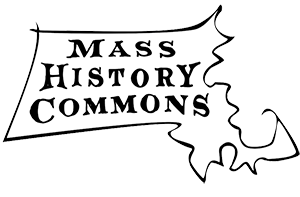by David M. Powers
The agreement which William Pynchon made with the Indians of “Agaam” (as it is spelled in the text) on this day, 15 July, 383 years ago – a Friday that year – was an extraordinary document for several reasons.
1. It named two women: Kewenusk and Niarum. Pynchon figured out the importance of matriarchal authority for Native peoples.
2. In addition to personal names it included eight Algonquian words, among them cotinackeesh (cultivated ground), saschiminesh (peas), and tamaham (wife), as well as place names such as Masaksicke (Long Meadow).
3. It specified rights the Indians requested to sustain their hunter-gatherer way of life. The Natives’ entitlements included hunting and fishing, harvesting their crops of nuts, corn, and peas, and receiving damages if their crops were spoiled by the settlers’ cattle.
4. It included payment in goods and wampum: coats, hoes, hatchets, knives.
Although Pynchon intended to “buy” land for his settlement from the local tribe, it remains quite unclear to what extent the Agawam people realized that they were forever alienating themselves from their lands. It seems more likely they viewed the transaction as a treaty which could be subject to later renegotiation.
The Springfield Indian deed of 1636 was written two years earlier than the surviving Roger Williams deed to Providence, Rhode Island. It became the model for all the land agreements which were crafted in the Connecticut River valley by William Pynchon and his son and successor, John. It reveals Pynchon’s developing respect for Native culture. Fellow colonists also appreciated him because of his considerable expertise, which became increasingly evident during his years of trading peacefully with the Indians. Even though his point of view was at variance with the general thinking of his fellow colonists, his advice was well-regarded and his intercultural role valued.

1641 deed to Chicopee, MA, showing signatures of John Pynchon and George Moxon, as well as marks by Native women: “Mishqua, her mark” (top line of signatures) and “Secousk, late the wife of Kenip.”
